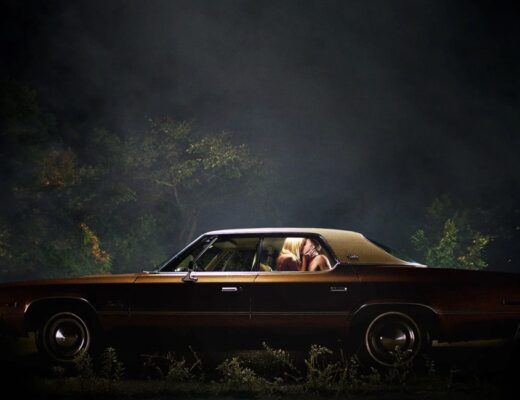Kimi Takesue’s third feature film is a fraught, respectably reflexive process in objectification. Utilizing the much ado of the tourism industry as our subject (through which it extrapolates its thesis), Onlookers revels in familiar formal intrigues: static, compositionally-minded cinematography, distanced gazes, and soundscapes with ambient sensibilities that somehow recall that great sandbox video game, Roller Coaster Tycoon 3. To find an easy and important analog for this film, one might turn to a work such as Sergei Loznitsa’s Austerlitz, insofar as the subject of tourism orbits and enables anthropological examination. But where Loznitsa rooted his analysis in the constructs built from the relationship with one, very specifically formulated space — where history can play contingent text to the present’s passivity — Takesue seems disinterested in anything so determined. Her montage interlaces landscapes, each often occupied by Laotians or tourists — persons consistently participating in acts religious, economic, or excursionist. There’s no discrimination between these acts, no delineated structure that curates an ideological trajectory; instead, we simply gather the film’s thesis through motley organization: a reflexivity that contends with the camera’s foreign objecthood and its creation of everything before it into a flattened spectacle. Tethering such a structure of montage to the global tourism industry (not to mention Takesue’s vantage as an American filmmaker) makes for an exciting journey that plateaus about 11 minutes in.
Formal introspection quickly becomes an act of stagnation, repeating with each new image the idea that came before it. The equivocal character of each shot asserts the character of the work as cinematic object. Nothing present in any of the rather immediate and obvious compositions denotes any sense of texture, lending an anonymity and ephemerality to the landscapes themselves, as is emphasized through a pacing in which each cut occurs within the span of 30 seconds: these static wides are then variants of the same conception. Sure, there’s intent in that choice, even articulated in the work’s very synopsis, but of course intentionality isn’t inherently a virtue. If this ideology of the montage is meant to be an expression of the ever-present parade of tourism as a neocolonial, parasitic industry, that’s a fine sentiment, but there’s little of note here that hasn’t already been contended with over two centuries of ethnographic image-making. In fact, it seems that Onlookers could have registered as a work of greater intrigue and affect were it a photographic project: an album of stills that curate our gaze, naturally bringing both attention to the ontological (as this does), the anthropological (as this does), but also to the object of curation as a historical process of the imagined (which this does not), set within the subjective history of the photograph.
The idea of the “photograph,” in fact, is overtly present throughout the film, implied and crystallized in the tourists’ cameras wishing to neatly capture these places they visit and taking these images with them once their vacation comes to a close. Sound and time, ultimately, offer little here. They are both under-utilized and sterile, unnecessary for thematic extrapolation. This is a film that attunes itself to the formal machinations of familiar work — each year a lauded observational doc, hyper-focused on localized global trends, finds its way to some year-end lists and onto esteemed streaming platforms — and thus culminates in familiar perspectives and an even more familiar nondescriptness. With everything here pitched as a signifier of the exact same thing, and the signified remaining woefully ignorant to the introduced contexts, Onlookers is a tired echo of polemics long abstracted into the institutionalized nether.
DIRECTOR: Kimi Takesue; DISTRIBUTOR: Metrograph Pictures; IN THEATERS: February 16; RUNTIME: 1 hr. 12 min.
Originally published as part of InRO Weekly — Volume 1, Issue 13.







